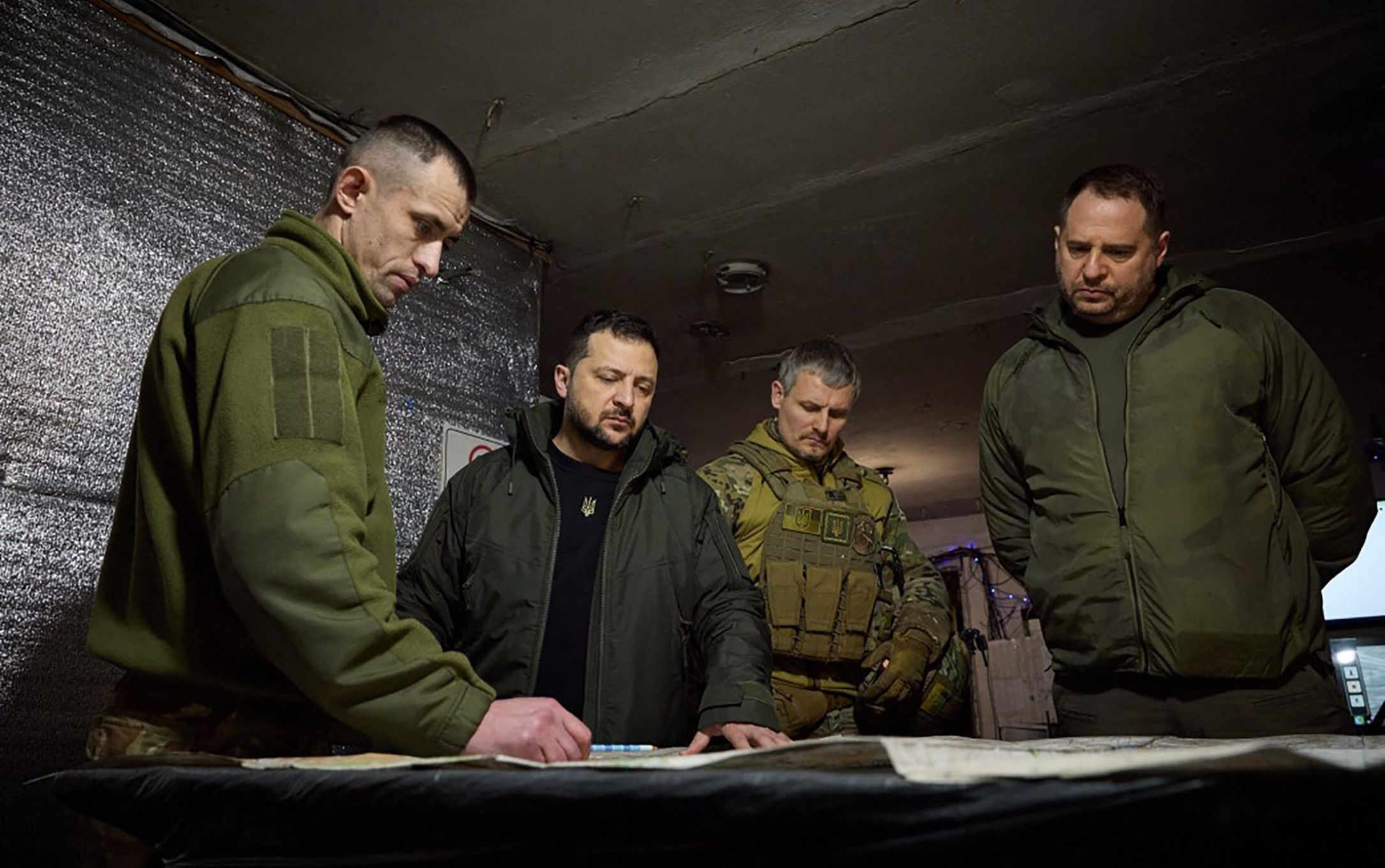The military and economic balance in war has shifted strongly against Ukraine, and it is very hard to see how this tendency can now be reversed. There is still time for Ukraine to win a qualified victory against Russia; but only if the United States commits itself strongly to a compromise peace.
Russia’s population is at least four times that of Ukraine, and its GDP is 14 times greater. Western attempts to cripple Russia through economic sanctions have failed. The Russian economy grew by around three percent in 2023, as a result of increased energy exports to non-Western countries and a massive and successful effort to invest in military industrial production. Ukraine is making desperate attempts to boost its own military production, but from a far lower industrial base coupled with an acute shortage of skilled labor.
The Biden administration is therefore correct to warn that without continued and massive U.S. military aid to Ukraine, Russia will quickly win. It is however equally clear that U.S. aid — still less at the levels sustained to date — cannot be guaranteed even in the medium term. Partly due to the new U.S. commitment to Israel created by the Gaza war and the threat of it spreading, the United States is also failing adequately to replenish Ukraine’s dwindling stocks of air-defense missiles, which are crucially important both on the battlefield and in the protection of Ukrainian infrastructure and industry. Both the United States and Europe are failing to meet their targets for increased production of artillery shells, which Russia is firing at some three to five times the Ukrainian rate.
And even if the West could vastly increase its military production (highly doubtful given the pressure on Western budgets, supply chain problems, and skilled labor shortages), we cannot provide Ukraine with more soldiers. Ukrainian manpower shortages are becoming increasingly acute, and are leading to increasingly draconian conscription measures and bitter disputes within the Ukrainian government over how to enforce conscription, which is faltering in the face of growing public resistance.
Following the failure of last year’s Ukrainian counteroffensive, the Biden administration and the Ukrainian government and military have all shifted to a defensive strategy, including trying to fortify Ukraine’s long northern border with Russia and Belarus. This region has been quiet since Moscow withdrew its troops in the spring for 2022, after the failure of its initial invasion from the north. However, Russia’s growing advantage in numbers means that at some point in future, its army may be able to attack again along this front.
While smart, and even if successful in the short term, a strategy of standing indefinitely on the defensive has two colossal disadvantages for Ukraine. Politically, it brings with it the obvious implication that Russia will go on holding the areas it now controls. This being so, more and more Ukrainians and Westerners will obviously begin to call for a compromise peace. The danger is that if we leave this too long, the balance will have shifted so decisively against Ukraine that Russia will have few incentives left to compromise.
For militarily, a permanent defensive strategy commits Ukraine to an indefinite war of attrition in which Russia has huge long-term advantages. It is quite true that as in the First World War, recent developments in military technology strongly favor the defensive. This was shown in the defeat of the Russian offensive of 2022 and the Ukrainian offensive of 2023, and the very slow progress that Russia has made in its effort to capture small towns like Avdiivka in the Donbas. However, we should also remember that in the First World War, great superiority in numbers, munitions and economic strength did eventually lead to victory for the Allies.
Faced with this reality, the Ukrainian government and Western backers of complete Ukrainian victory are resorting to a set of optimistic stories, which might be unkindly described as stretching from the doubtful to the magical. One of these is to take the highest possible estimate of Russian casualties in its recent offensives, and on this basis to argue that through repeated failed offensives, the Russian army will exhaust itself to the point where Moscow seeks peace on Western terms. However, unless the Ukrainian army could attack successfully in turn, this would still leave the territories now occupied by Russia in Russian hands.
It is also not at all clear on what basis Western analysis is making these “estimates.” In some cases, they come straight from the Ukrainian military. According to Ukrainian military veterans with whom I spoke last year, the belief that in the Donbas, Russia is launching mass “human wave” attacks in the style of World War II appears to be largely wrong. Rather, the Russian army has sought to force the Ukrainians to fight in relatively small, clearly defined areas where they can be pounded incessantly by Russian artillery.
The goal at present seems not to rapidly seize large amounts of territory, but to rely on Russia’s advantage in artillery to kill large numbers of Ukrainian soldiers, while trying to keep Russian casualties as low as possible. If this picture is correct, then while Russia’s approach will take time, in the long run Ukraine’s shortage of troops means that it will simply not have enough left to cover its entire front.
The other hope of the Ukrainian government and pro-war Westerners rests in long-range missiles. If the West can be persuaded to provide many more of them, then it is argued firstly that by knocking out the Kerch bridge and driving off the Russian navy, Ukraine can isolate Crimea and force Russia to sue for peace. This hope is empty. The one major success of the Russian invasion of 2022 was to conquer the land between Russia and Crimea. It was this “land bridge” that last year’s Ukrainian offensive was intended to break — but failed to do so.
The other Ukrainian plan — as demonstrated by the latest Ukrainian attacks on the Russian city of Belgorod — seems to be missile strikes on targets in Russia in an effort to put pressure on the Kremlin. As a military strategy, this is also hopeless. The vast size of Russia means that in terms of damage to Russia’s economic capacity, even greatly expanded Ukrainian attacks would be mere pinpricks. In terms of civilian casualties, they will anger ordinary Russians without killing anything like enough to produce a mass movement for peace.
It may be however that angering Russians is precisely the Ukrainian intention. A strike by a Western-supplied missile that caused very large civilian casualties or destroyed a high profile target could lead to massive pressure on the Kremlin to retaliate against the West, whether by hitting Western targets in Ukraine or by providing its own missiles and satellite technology to enemies of America in the Middle East. This could in turn provoke much more direct Western involvement in the conflict — which Kyiv desires but the Biden administration and European governments have been anxious to avoid, and which the United States can desperately ill afford given the dangers it is facing elsewhere in the world.
If this picture is correct, then Washington and Kyiv both have a strong incentive to open peace talks while we still retain significant leverage; for if we wait, the terms that we will get in the future are likely to be much worse for Ukraine and much more humiliating for the West. In terms of Putin’s goals when he invaded Ukraine, and of the past 300 years of Russian domination of Ukraine, a war that ended today with 80 percent of Ukraine independent and free to seek membership of the European Union should be seen as a very important victory for Ukraine. It would not be a complete victory — but complete victory is simply no longer possible.
















